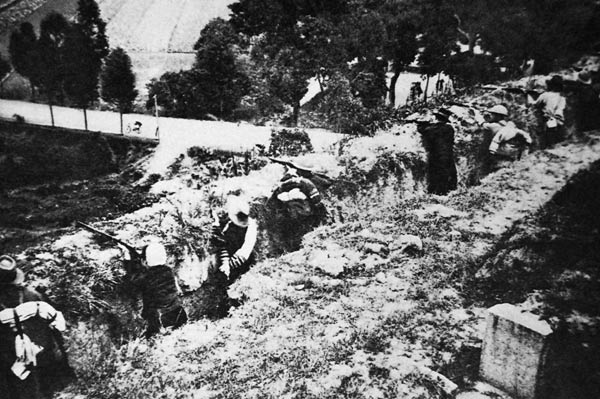Historians hope to record what is left from 1940s Hong Kong, Andrea Deng reports.
The faces of the dead are deeply imprinted on the memory of Liu Chun-sing, an 87-year-old former soldier of the East River Brigade, who saw his friends and colleagues fall during the War of Resistance against Japanese Aggression (1937-45).
Many of those who stand out were fellow villagers, people with the same surname. His friend Liu Kum-chuen was bayoneted by a Japanese soldier while he was riding his bicycle. There was Liu Hung-cheuk, who was beheaded, and Liu Shu-wan, who was beaten to death for sneaking a piece of bread to another villager who was being punished for failing to bow to Japanese soldiers. Liu Hap-yau was shot for no reason as he unloaded freight from a train.
The ever-increasing number of atrocities drove Liu Chun-sing into the hinterland, where he took up arms with the Hong Kong Kowloon Brigade under the command of the East River Column. "I was a 14-year-old kid, running around seeing all these things. So when I heard there was a chance to fight the Japanese soldiers, I decided to join," he said. The brigade also killed traitors who collaborated with the Japanese, he added.
Grabbing two pieces of clothing and a couple of catties of rice from his home, Liu Chun-sing took off into the wilds. Rice fetched a high price in those days, so he sold his supply to get the money for a fare to Guangdong, where the East River Column was signing up recruits.
"My life was worth five dollars - two preserved duck's eggs, nine taels of rice and two catties of oil, which was all I needed to live. So I thought if I died fighting, my life was only worth five dollars anyway," he said.
Stealth attacks
Liu Chun-sing became a fighter for the East River Column guerrillas and fought the Japanese all around Guangdong, including Baimanghua, Pingshan, Tiechong, Pinghai, Chishi, and Meilong.
The guerrillas had no advanced weapons. Most carried old rifles left behind by the British or snatched from dead Japanese. Liu Chun-sing and his comrades in arms were resourceful in finding stealthy ways to attack the enemy.
"We did a lion dance outside a Japanese garrison. They thought it was nothing out of the ordinary. Then we threw grenades and shot at them," he recalled.
"Another time we disguised ourselves as beggars looking for food and when we had our chance, we threw grenades at them," he said. "We didn't have dynamite. But we improvised explosives using woks, tungsten wire and locks. We used a sort of explosive charge the fishermen used to blow up the fish."
The poorly armed guerrillas paid heavily for carrying the fight to the Japanese. After the war, Liu Chun-sing was the only one from his school to return to Hong Kong unscathed.
|
 |
| This file photo shows members of the Hong Kong Kowloon Brigade under the East River Column fi ghting the Japanese. PROVIDED TO CHINA DAILY |
